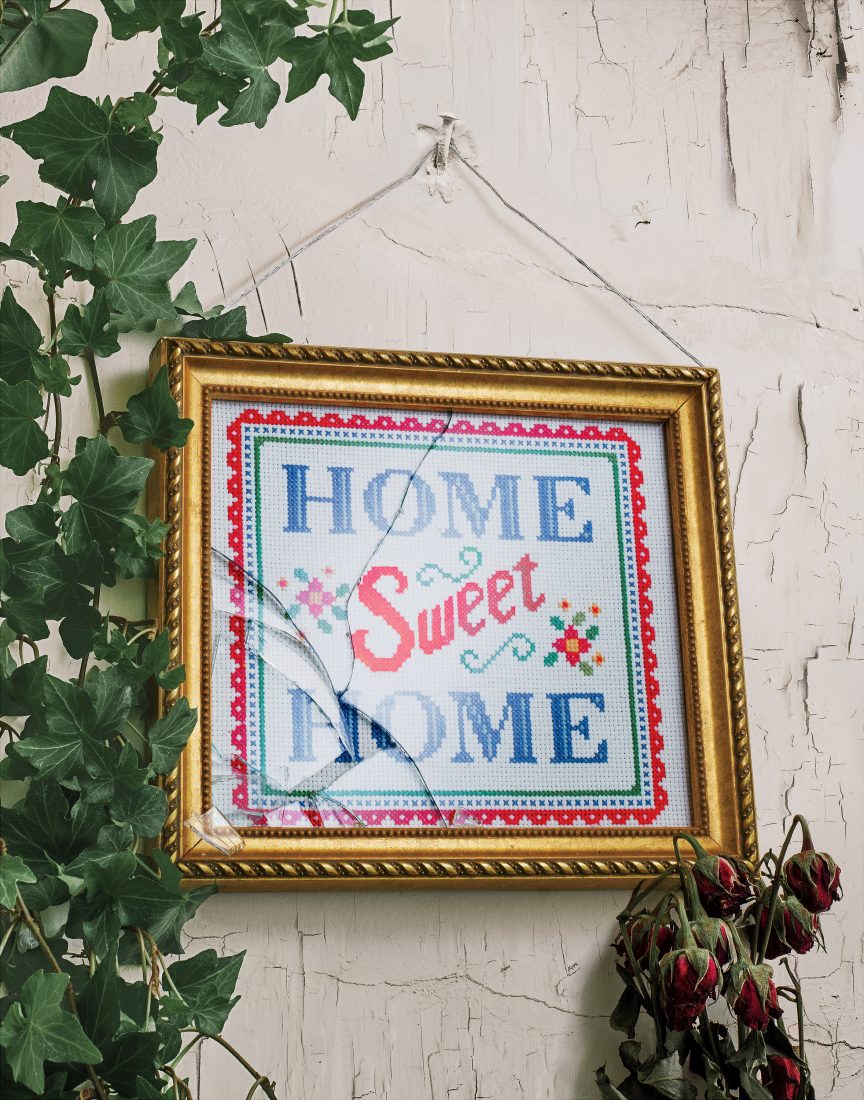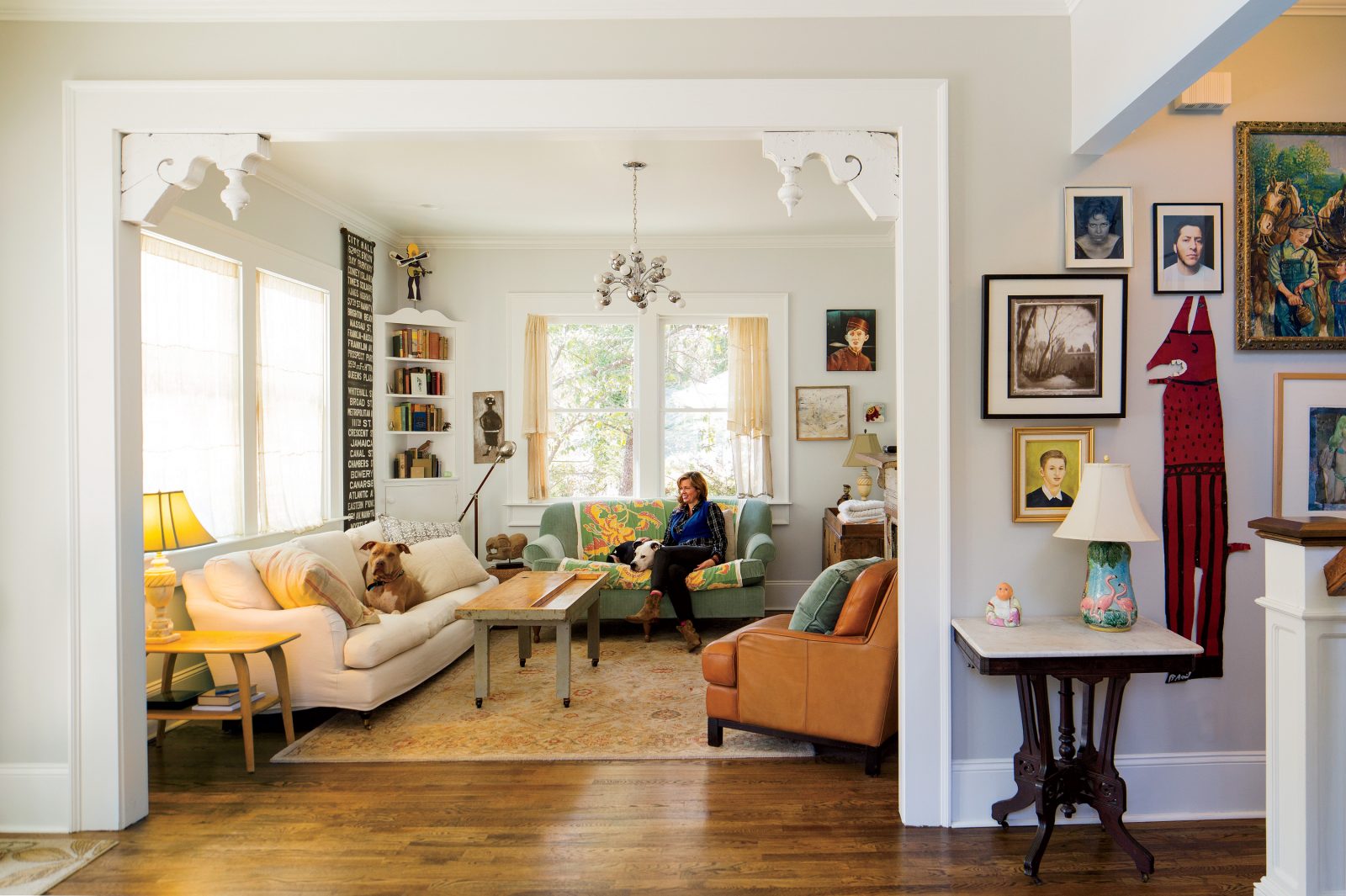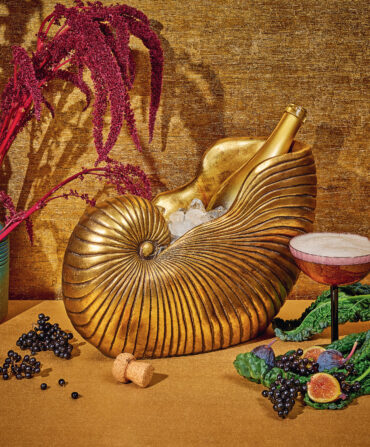Home & Garden
Home Sweet Home
When the author heard about a dilapidated cottage overtaken by weeds and kudzu in an Atlanta neighborhood, she knew it would become her family’s home. So she bought it – sight unseen

Photo: Amanda Greene
I purchased the one-story Victorian over the phone. At asking price. Without ever laying eyes on the property. (Or consulting my husband, T.)
It was not my most rational moment. But then, when it comes to love and real estate, few are. T and I had been casually looking for a home in and around downtown Atlanta for about a year, traveling from Tennessee, kids and dogs in tow, filled with the naive optimism of all families contemplating a fresh start.
We will be happy here. We will be happy in this new, old house. Our lives will resemble those in catalogues. I will bake pies in brightly colored Le Creuset stoneware. Our children will frolic among leaves. Our dogs will wear scarves.
Fantasy is the heart of real estate. You invent the dream and then you find a place to house it. And so it was for us in Atlanta, a city we long adored but could not afford. At least, not until I got the call from my friend Virginia, a contractor and expert flipper who was walking through the historic neighborhood of Candler Park when she spotted a bent poster-board sign among the weeds of a dilapidated cottage, For sale by owner scribbled in ballpoint pen, nearly illegibly, almost contemptuously, above the price.
“Seems like ten-foot ceilings. You should snap this one up,” she advised. Raven-haired, with bone structure like an Eames table, Virginia looks like Vivien Leigh in work boots. She has little trouble persuading folks to do things, and I was no exception. I made the call.
“Don’t you want to see it first?” the seller asked incredulously.
“I’m good.”
I had already seen many, many houses in Candler Park, all well over our budget. This one, I knew, given the price and the fact that it had stayed on the market more than twenty-four hours, had to be, much like its FOR SALE sign, a busted disaster.
I told our real estate agent, Michael Redwine, first. “You did what?” he asked, and winced when I shared the “terms” of the deal. “Oh, girl.” Then I confessed to my husband, whose reaction was similar, if the language wasn’t.
We made plans to drive to Atlanta the next morning to see the lemon I’d impulsively squeezed all over our future. When we pulled up to the overgrown patch of what was most likely once a yard but was now a combination street trash heap and red ant farm, I could hear all the oxygen leave T’s lungs.
“It looks sad,” my youngest daughter, Matilda, chimed from the backseat.
“What are those pointy things?” my eldest daughter, Dixie, asked, nodding toward the sagging front porch, where indeed, jutting from the sea of skunk vine and moldy Monster Energy bottles, two sprawling cacti acted as an inhospitable border hedge. It was as if the property were giving us the finger.
“Plants!” I chirped, uselessly.
“I like where we live now,” Matilda whined, before starting to cry.
“Don’t be such a baby,” Dixie snapped, then punched her in the arm.
“Go frolic in the leaves,” I commanded.
T and I waded through the cacti and ventured inside the hovel we’d already bought. My family was right. The house was sad: sadder than a crying clown, sadder than a thousand cello suites being played at the bottom of the sea, sadder than Christmas trees on the curb after New Year’s Day.
The house had been converted into a duplex and used as apartments for decades, and thus treated with as much affection as a leper in a hot tub. Every room held evidence of indifference. Shoddy paint jobs, protruding nails, peeling vinyl flooring, cracked windows, holes where pipes used to be, mildew in the bathroom corners, caked grease in the kitchens, fireplaces stuffed with three-foot-high ash, toilets, also stuffed. Outside was no better. Several exterior walls had seen the clapboard replaced by a toxin-coated paper that had been made illegal in the seventies. You could poke a straw through them as easily as wet Kleenex. There was also mold in the basement. And termite damage. And rotted subfloors. And no subfloors where subfloors ought to have been. And rats living the good life in the attic, using the kudzu that was suffocating the drooping roof as a rodent superhighway in and out of our lives.
We did have ten-foot ceilings.

Photo: Amanda Greene
House Proud
The finished renovation, complete with white picket fence
After a quick closing—no inspection necessary because, really, what further bad news could it bring—we immediately got to work. We interviewed a passel of contractors, settling on a man named Steve Moore because 1) unlike several others he didn’t show up driving a car that cost more than college tuition and 2) he reminded me of my grandfather—a no-nonsense, git-’er-done, old-school workaholic who could fix anything. His hands were as big as baseball mitts. He was also cheap. The only downside was that he thought we were crazy.
“We want to save as much of the original house as possible,” I explained.
“No you don’t,” Steve argued.
And so it went, T and I sourcing salvage sinks and light fixtures and retrofitting doors, while Steve shook his head and complained about the extra labor. We almost lost him when I delivered a crate of 120-year-old gingerbread corbels I’d found from a teardown in Kentucky.
“I want to use these as shelf brackets.”
He eyeballed the peeling paint and split wood, then turned to me with a wanton sigh. “What in the hell, pardon me, heck for?”
“Patina,” I answered.
“You mean dirt?”
What could I say? Like most Southerners, I feel most alive among old things. The more decrepit, the better. There are practical benefits, too: If a table has survived a century already, a spilled Bloody Mary isn’t going to hurt it much. The South is about nothing if not family, and families mean sticky children and damp dogs and Sunday suppers and houseguests who fancy their bourbon, and all of that exists more contentedly in an unfussy home.
My mother, no fan of her Appalachian heritage (or houseguests, or dogs), went the other direction, opting for plush wall-to-wall carpeting and a sitting room no one but the reverend or the insurance salesman was allowed to sit in. (I remember as a girl being terrified I’d knock the matching fabric covers off their tenuous perches on the arms of the wingback chairs; something that seemed sinful somehow, evidence of a shameful genetic history.) My mother ran as far as possible from her beginnings, an impecunious start in a repressive factory town that she saw as less photogenic than enervating. Tidy couches and curtains in an anonymous sunny Florida suburb meant she’d at last left all that hillbilly dust behind.
I understood, but what I aimed to create with my resurrected Atlanta cottage was the tonal opposite of that controlled fastidiousness. I longed for a comely, welcoming space where no human disaster would register. An enveloping timelessness born of the history inherent in all the objects we chose to fill the house: a cast-iron sink we rescued from the dump; a Civil War pharmacy cabinet; a pastry mirror whose red letters have faded like writing in wet sand. And art. A riot of Southern paintings, photographs, sculptures, primitives, and ephemera that would go on to cover every spare inch of wall like plaid on golf pants.
I craved the opposite of quiet and stillness. What I was after was a house where every room told a thousand stories. Where ours was not the only story being told.

Photo: Amanda Greene
The author in her living room, with rescued pit bulls Milton and Elvis.
In just over seven short months, our shabby sinkhole of neglect had been reborn into a pleasing two-story cottage with windows wide enough to drink in the surrounding greenery and flood the original, refinished floors with dappled light. Walls came down and revealed the sweet relief of space. We ripped out the toxic paper exterior and replaced the whole of it with French doors, allowing an unobstructed sight line from the front room through to the backyard. We hung the dreaded corbels, and even Steve Moore was pleased. “Well, what do ya know?” he marveled.
Our children began to play in the backyard, now cleared of all the briar patches and rusted chain link, the trees freed of invasive weeds exhaling at last, their leaves unfurling to meet the sun. The dogs chased squirrels, dug for long-forgotten bones.
We shored up the front porch, put in the start of a garden of heirloom roses and Limelight hydrangeas. After one of our more protracted debates, I convinced T to paint the front door a bright pink. Now strangers stop and ask to take pictures of it, letting themselves through the old iron gate and pausing to chat on our steps. Most talk about how the house used to look, how it looks now. They say it makes them happy when they walk past. I know this to be true; I see the smiles while I water the clematis, hungrily vining around the posts where the hateful cactus used to be.
It is such a Southern thing to wrench beauty out of age. To resuscitate ruin. To long for pretty like oxygen. To want to share that pretty with as many people as possible.
At no point in the process of finding this house and breathing it back to life did I ever think it was just for me. In my head, there were always others to consider. The families before and after ours. The ghosts already there and the babies yet to arrive. The South is a crowded landscape, because our past never leaves. Why would it when we offer it a seat at the table?
When T cleaned out the fireplace, he discovered the remnants of burned letters and photos clinging to the inside of the chimney. In one picture, a bald man with piercing eyes poses somberly in a bow tie. In a postcard, Private W. W. Steffey writes, “I have been in excellent health and am feeling fine now. We are all very jubilant over this armistice and expecting to return very soon.”
It fills me with a deep joy to think if he did, the house would greet him with a comforting familiarity. That he would see it and he would feel at home.







